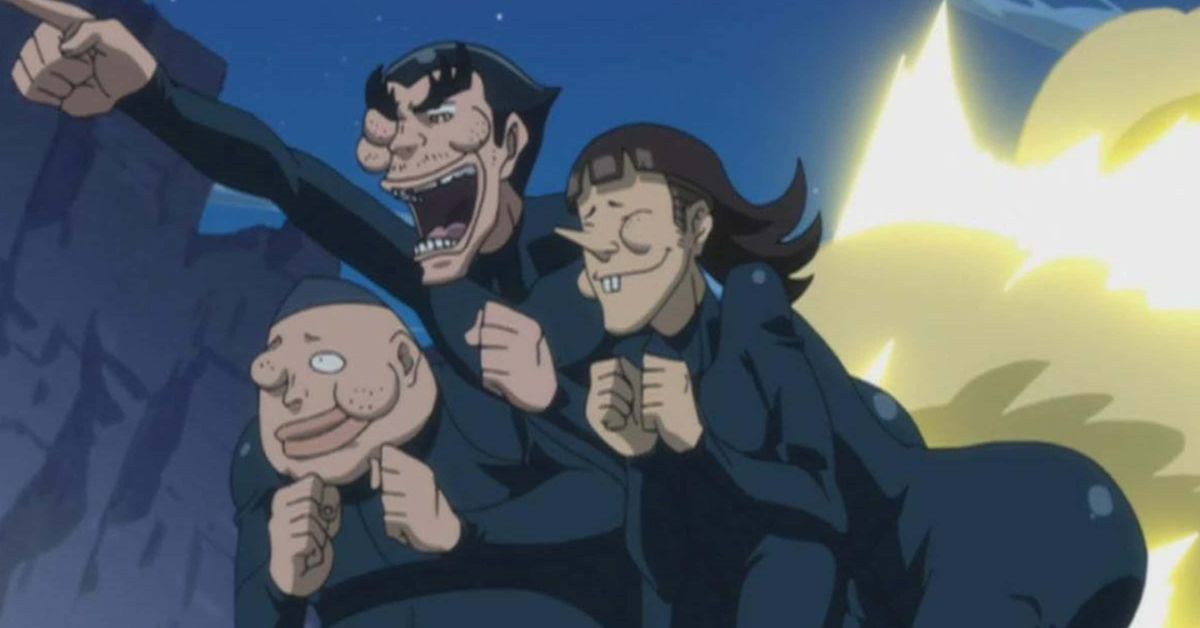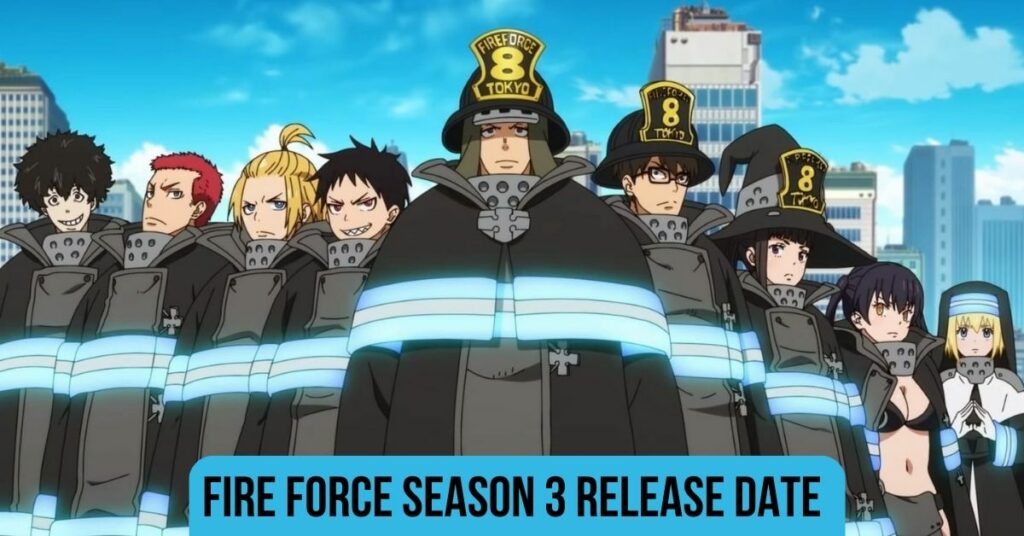Any anime plot is only as good as its villains. Whether intricate or straightforward, a lot of antagonists are so well-known that they are more well-liked than the heroes. Their presence really enhances the story and helps to totally immerse the viewer.
Sadly, not all villains are described in such detail. There are just as many villains criticized as pointless afterthoughts, whether they are contradictory, lack a distinct personality, or are simply denied the chance for a satisfactory conclusion. The fact that many of these characters had potential to be more than they ultimately were is the biggest sorrow surrounding them.

16. Big Mom (One Piece)
Big Mom from One Piece had the potential to be a formidable antagonist. Whole Cake Island is one of the most enduring adventures in the series because of her army of enthralling and creative children. Unfortunately, Big Mom is a complete failure.
She was not only simple to control and employ by the heroes, but she hasn’t ever actually prevailed in a significant battle by herself. Big Mom is criticized by many fans for diminishing the significance of what it means to be an emperor of the sea and for providing inadequate female representation.
15. Zeldris (Seven Deadly Sins)
During the Ten Commandments’ assault on Britannia, Zeldris served as their leader. His goal to preserve Gelda was somewhat cliché but compelling nonetheless, and it offered him a purpose other than intrinsic loyalty to serve the Demon King.
Unfortunately, Meliodas had already traveled the same route when he decided to help a loved one by turning against the Demon King. In a world already crowded with undeveloped romantic interests, it made his character seem empty and unnecessary. The fact that he and Meliodas had the same voice actor didn’t help.
You can also read about other similar articles by visiting the links below:
- Studio Passione Will Release A Remake Of The Beloved Anime “Spice And Wolf” In 2024
- Ranking Of The 10 Worst Anime Adaptations Of Visual Novels
14. Stroheim (JoJo’s Bizarre Adventure)
Stroheim was untidy, despite the fact that JoJo’s Bizarre Adventure villains are usually well-written. He was a fitting enemy at the start of Battle Tendency because he was a nazi. Given the hero’s well-known stance against racism, many fans found the ceasefire he made with Joseph Joestar to be offensive.
Stroheim’s role became even more unclear during the battle against Kars. He repeatedly battled the Pillar Man but unintentionally used UV Light to improve him. Stroheim promptly gave in to Kars in his final state, but after the villain was vanquished, they parted ways amicably. He changed roles so frequently that he was confusing from a narrative perspective.
13. Yammy (Bleach)
Yammy from Bleach was first portrayed as Ulqiorra’s obedient but rather weak underling. Despite beating Ichigo to a pulp and fending off Uryu’s blows, there was a glaring difference between him and the other Espada members.
As Number 0, or Aizen’s loneliest and most potent servant, Yammy revealed that he was Number 0 in his final form. Despite the fact that he was defeated by Kenpachi and Byakuya off-screen, nothing came of this reveal. If Yammy’s fight wasn’t further developed, there would be little reason to retain him in the story after the Espada’s initial incursion.
12. The Emperor (Akame Ga Kill!)
The Emperor, who was a victim of circumstance, served as the game’s major enemy. He depended on Minister Honest’s unscrupulous counsel after the passing of his parents when making significant decisions.
No matter how terrible things got, the Emperor never genuinely mistrusted Honest or changed as a person, which is a fundamental flaw in his character. Furthermore, as a child, he could not even be held solely responsible for his acts. Due to the fact that he cannot be held responsible for most of what occurred, his execution was violent and severe.
11. Combustion Man (Avatar: The Last Airbender)
Combustion Man was one of Avatar: The Last Airbender’s most powerful firebenders. Zuko first hired him to make sure Aang was dead so he wouldn’t have to worry about his whereabouts. Later, the prince had a change of heart and attempted to abort the assault, but was rejected and put in danger along with his original targets.
It’s quite impossible to understand Combustion Man’s motivations in the absence of communication. He had not been under Ozai’s direct command, thus he was obviously not a Fire Nation soldier. He wasn’t just a mercenary though, as evidenced by the fact that he turned down Zuko’s second offer.
Also check about other articles related to Anime:
10. King Sweyn (Vinland Saga)
The primary antagonist in the first season of Vinland Saga was King Sweyn. He was described as a smart political manipulator who could discern Askeladd’s origins from a glance away, although in reality he never did anything particularly clever.
Sweyn was frequently outwitted by Canute and Askeladd. Despite being able to predict their next steps, nothing he did was effective in stopping them. Sweyn thereby gave off a more helpless and foolish impression than that of a threat out to subjugate Wales and murder his own son.
9. Tonpa (Hunter X Hunter)
Tonpa was one of Hunter X Hunter’s early antagonists and by far its least interesting. He had no real interest in obtaining a license himself; his only goal was to humiliate “rookies” (exam beginners). Tonpa’s chubby frame and total lack of talent made it impossible to understand how he managed to locate so many examinations in the first place.
The villain is said to have visited dozens, although it took Gon and Killua their best sleuthing to even find one. Furthermore, his highly selfish motivations were never clarified, and they are absurd in light of what he would stand to earn from actually obtaining a hunter’s license.
8. Lara Tybur (Attack On Titan)
Attack on Titan’s War Hammer user and Marley’s undiscovered weapon was Lara Tybur. One could anticipate her to be a superb nemesis who lasts well into the closing chapters given the anticipation surrounding her arrival. But Lara had hardly any conversation and was almost immediately dead.
Instead of giving Lara the attention she deserved, Willy, who also passed away upon Eren’s arrival in Liberio, received it. The Tybur family would not have been as easily forgotten in the larger scheme of the story if Lara had lived at least until the attack on Paradis.
7. Kaguya Otsutsuki (Naruto)
Because of numerous fundamental issues, Kaguya Otsutsuki was the least popular Naruto villain. Her appearance was incredibly forced and had no build-up, given that she hadn’t even been hinted at until well into the Fourth Shinobi War. By the time Kaguya appeared, many fans had no real idea who she was, let alone felt anything for her loss.
Kaguya’s appearance was made worse by the fact that Madara, a legendary shinobi who had been teased since the first series, was replaced by her. Although Kaguya may have done a better job of setting up the upcoming Boruto series, she interfered with the end of the previous arc.
6. Muscular (My Hero Academia)
There are many well-written antagonists in My Hero Academia who can be used as social satire, like Spinner, Himiko Toga, and Tomura Shigaraki. However, many other antagonists—Muscular being a notable example—are just included in the narrative to serve as combat scenes.
Simple conversation and a lack of background information about Muscular make it evident that he is more like a boss fight in a video game than a real person, and the simple prose isn’t all that outstanding. Even when Muscular made a comeback in Season 6, he didn’t speak or do anything novel and lost again very quickly.
5. Demon Lord Clayman (That Time I Got Reincarnated As A Slime)
That Time I Got Reincarnated as a Slime had a lot of characters, so a lot of them had language and character designs that were plain and easy to understand. This includes numerous token villains who, whether on purpose or not, were utterly unlikeable.
Demon Lord Clayman was a significant opponent who performed a lot of talking and acting but had flimsy motivations and ideas in his head in addition to his basic moustache-twirling speech. His character arc consisted primarily of his hate of Rimuru Tempest for the sake of the plot, and he never offered any intelligent commentary.
4. Princess Malty (The Rising Of The Shield Hero)
In retrospect, a lot of the characters in The Rising of the Shield Hero were poorly written, but none is more so than the despised princess Malty. Her motivations were hazy and lacked any emotional resonance of any kind, making her an ugly, cunning enemy who existed just for its own sake.
After lying that Naofumi Iwatani had tried to assault her, Malty continued to rile up Naofumi. This character’s writing was uninspired, and it posed major questions about whether or not people should accept allegations of abuse and assault.
3. Ren Sohma (Fruits Basket)
Even though Fruits Basket is a well-known and legendary shojo series, there are numerous peculiarities and writing problems, frequently involving the parents, in Natsuki Takaya’s masterpiece. For overusing terrible parents to fuel the drama, Fruits Basket has come under fire, and some of those nasty parents aren’t even properly written.
Akito’s mother is Ren Sohma, a resentful and conceited woman who hated her daughter for attracting so much attention. Even though Ren’s childish and aggressive behavior is terrible enough, Fruits Basket didn’t even complete developing her character development. After a certain point, she simply disappeared, her nasty subplot having no resolution or justification.
2. Near (Death Note)
Near, the white-haired child who serves as the final enemy in Death Note, was ostensibly written to be L without the eccentric charm. In contrast to the impulsive Mello, Near exhibited traits similar to L, such as his outward calm demeanor and readiness to assist the authorities, but the writing failed to capture the reader’s attention.
Near had the same core ideas as the original L without adding any interesting twists, so it felt like L 1.5. He even spoke inanely and basically just reiterated L’s ideas, such as maintaining that regardless of what Light/Kira may claim, Kira is simply a serial killer and not a visionary of justice.
1. Enmu (Demon Slayer)
Lower Moon 1 Enmu received the worst writing of any Demon Slayer enemy. However, Enmu was not at all sympathetic. Other antagonists, including Daki and her protective brother Gyutaro, had good or excellent writing as tragic characters who turned into monsters.
Enmu had no original worldviews or beliefs to share; he was just another spiteful demon who enjoyed to play with humanity. Then, after being defeated, he made an attempt to appeal to viewers’ sympathy in the manner of other demons, but it was unsuccessful. Enmu’s self-pitying death speech fell hollow since he wasn’t intended to be cool or sympathetic.
Our website Poptopnews.com has more such articles and latest updates. You can always find it on google by writing pop top news and find it on the top.



